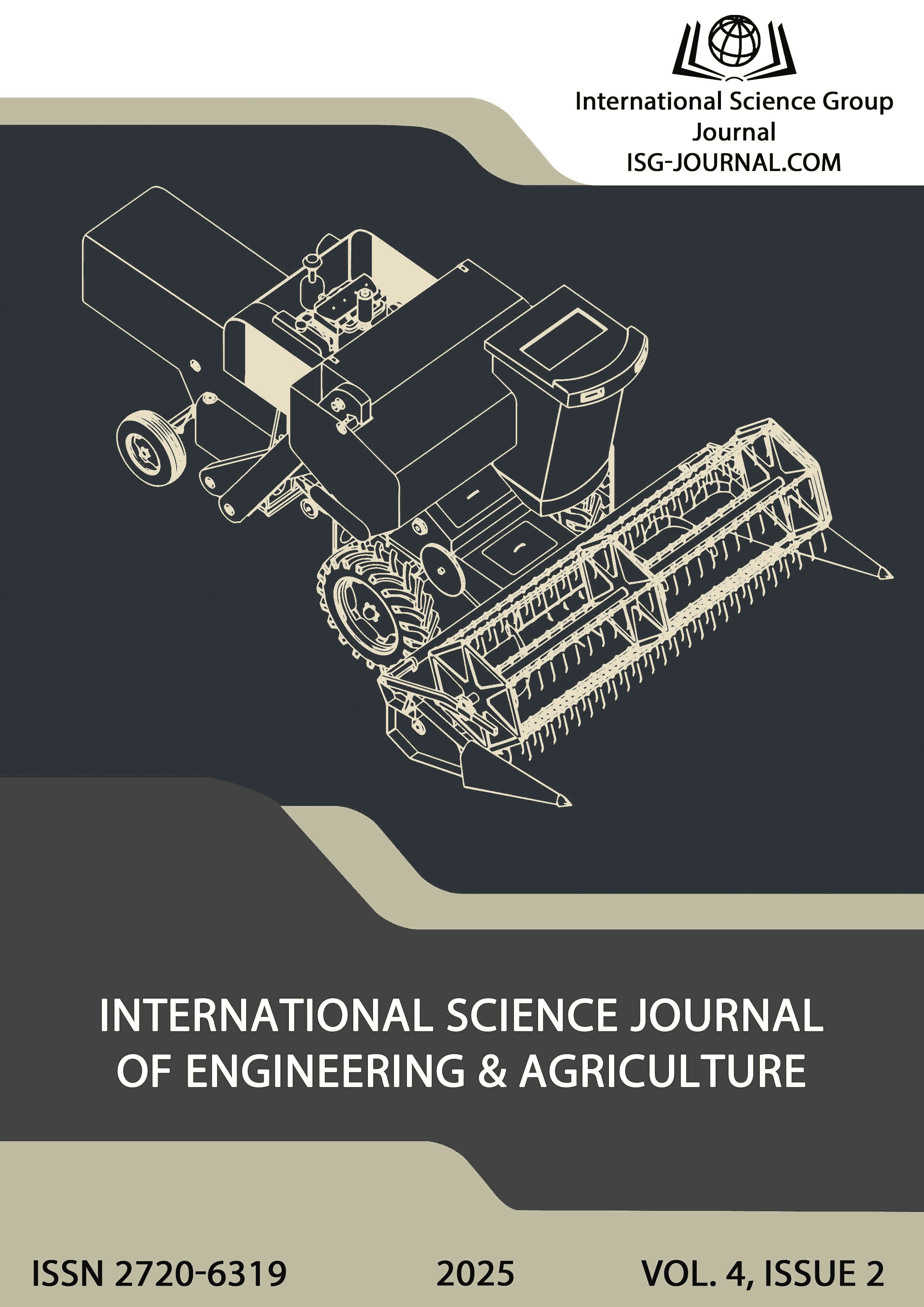Development of a Mathematical Model to Improve the Efficiency of Telecommunication Networks
DOI:
https://doi.org/10.46299/j.isjea.20250402.03Keywords:
telecommunication networks, traffic optimization, mathematical model, load balancing, Software-Defined Networking, packet loss probabilityAbstract
The article addresses the problem of traffic management optimization in telecommunication networks. A mathematical model is presented that enhances the efficiency of network resource utilization, reduces data transmission delays, and minimizes packet loss probability. The study is based on an analysis of networks in the United States and Ukraine, allowing for a comparative assessment of traffic management approaches in different regions. The proposed model employs methods of optimal resource allocation, load balancing, and adaptive routing control [1,2]. To validate the effectiveness of the approach, simulation experiments were conducted using real network load data. The analysis demonstrated that the implementation of modern technologies, particularly Software-Defined Networking (SDN), significantly improves service quality and enables flexible network management [9,10]. A comparative analysis of USA and Ukrainian telecommunication networks highlights differences in modernization strategies: while SDN solutions are actively adopted in the USA, Ukraine primarily focuses on upgrading traditional infrastructure. The proposed model can be adapted to various operational conditions and integrated with modern technologies to enhance network performance. Future research prospects include extending the model to account for cybersecurity parameters, utilizing machine learning methods for adaptive traffic management, and implementing the proposed solutions in real operator networks.References
A. Tanenbaum, Computer Networks, 5th ed. Pearson, 2010.
J. Kurose and K. Ross, Computer Networking: A Top-Down Approach, 7th ed. Pearson, 2016.
N. McKeown et al., “OpenFlow: Enabling Innovation in Campus Networks,” ACM SIGCOMM Computer Communication Review, vol. 38, no. 2, pp. 69–74, 2008.
Cisco Systems, Network Traffic Optimization and Management Strategies. Cisco Press, 2020.
IEEE Communications Society, “Advances in Software-Defined Networking and Network Virtualization,” IEEE Journals & Magazines, vol. 59, no. 3, pp. 45–57, 2021.
ITU-T, Recommendations on Next-Generation Network Traffic Management. International Telecommunication Union, 2019.
N. Chowdhury and R. Boutaba, “A Survey of Network Virtualization,” Computer Networks, vol. 54, no. 5, pp. 862–876, 2010.
Y. Li and M. Wang, Software-Defined Networking for Future Internet. Springer, 2018.
IETF, RFC 7426: Software-Defined Networking (SDN): Layers and Architecture Terminology, 2015.
M. Baldi and Y. Ofek, “End-to-End Delay Analysis in Software-Defined Networks,” IEEE Transactions on Communications, vol. 70, no. 8, pp. 5123–5134, 2022.
Bondarenko O.M., Shevchenko V.P. Metody optymizatsii upravlinnia trafikom u kompiuternykh merezhakh. // Visnyk NTUU "KPI", 2020.
Sydorenko L.M., Kovalenko I.O. Analiz efektyvnosti SDN-tekhnolohii u telekomunikatsiinykh merezhakh Ukrainy. // Zhurnal "Kompiuterni tekhnolohii ta informatsiini systemy", 2021.
Hrynchuk P.O. Vykorystannia neironnykh merezh dlia prohnozuvannia navantazhennia na telekomunikatsiini merezhi. // Naukovyi visnyk ONAS im. O.S. Popova, 2019.
Melnyk V.S., Kravchenko T.V. Metody balansuvannia navantazhennia u velykykh operatorskykh merezhakh Ukrainy. // Visnyk Kharkivskoho natsionalnoho universytetu radioelektroniky, 2022.
Petrenko Yu.M. Vplyv tekhnolohii virtualizatsii NFV na efektyvnist roboty operatorskykh merezh v Ukraini. // Zbirnyk naukovykh prats "Informatsiini tekhnolohii ta telekomunikatsii", 2023.
Downloads
Published
How to Cite
Issue
Section
License
Copyright (c) 2025 Viktoriia Trofymchuk

This work is licensed under a Creative Commons Attribution 4.0 International License.






